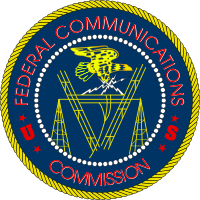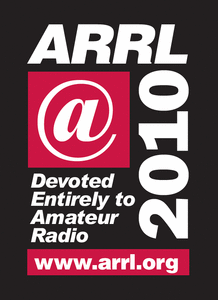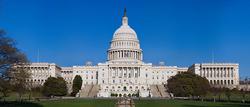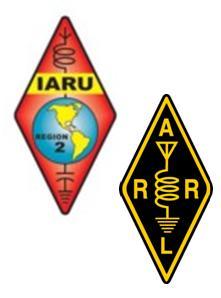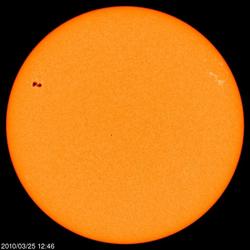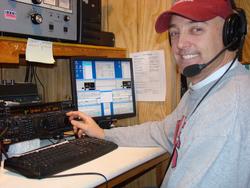 March 25, 2010 John E. Ross, KD8IDJ, Editor
| ||||||||||
ARRL Executive Committee Examines Proposed Vanity Call Sign Changes, Legislative, Regulatory Issues, More
The ARRL Executive Committee (EC) held its first 2010 meeting Saturday, March 13 in Denver. The EC worked through a lengthy agenda that for the first time had been shared in advance with ARRL members -- the result of an ARRL Board action at its January meeting intended to increase transparency in the governance of the organization. The EC administers the League's affairs in between Board meetings. It consists of the President (Kay Craigie, N3KN), five Directors elected annually by the Board, and - without vote - the First Vice President (Rick Roderick, K5UR) and Executive Vice President (David Sumner, K1ZZ). For 2010 the Director members are Tom Frenaye, K1KI (New England), George R. Isely, W9GIG (Central), Brian Mileshosky, N5ZGT (Rocky Mountain), Bob Vallio, W6RGG (Pacific) and Dr David Woolweaver, K5RAV (West Gulf). Also in attendance at the meeting were General Counsel Chris Imlay, W3KD; Vice President Bruce Frahm, K0BJ, and International Affairs Vice President Jay Bellows, K0QB. Read more here. FCC News: FCC Issues Notice of Proposed Rule Making on Government Disaster Drills and Amateur Radio
On March 24, the FCC released a Notice of Proposed Rule Making (NPRM) proposing to amend the Commission's Amateur Radio Service rules "with respect to Amateur Radio operations during government-sponsored emergency preparedness and disaster readiness drills and tests." While current rules provide for Amateur Radio use during emergencies, the rules prohibit communications where the station licensee or control operator has a pecuniary interest, including communications on behalf of an employer. In October 2009, the FCC released a Public Notice clarifying the Commission's rules relating to the use of Amateur Radio by licensed amateurs participating in drills and exercises on behalf of their employers. To date, the FCC has granted several dozen waivers under this new policy. The FCC notes that while there are some exceptions to this prohibition, "there is none that would permit amateur station control operators who are employees of public safety agencies and other entities, such as hospitals, to participate in drills and tests in preparation for such emergency situations and transmit messages on behalf of their employers during such drills and tests." Based on that, the Commission proposes to amend the rules to provide that, under certain limited conditions, Amateur Radio operators may transmit messages during emergency and disaster preparedness drills, regardless of whether the operators are employees of entities participating in the drill. Read more here. Glitch Delays Launch of New ARRL Web Site
The ARRL's launch of a new Web site has been delayed following problems that appeared as the huge computer programs were being transferred to their main Web server. Normally the Web site connects ham radio operators around the world, dynamically presenting the services that ARRL offers the ham radio community at www.arrl.org. "When we tried to switch over to the new Web site on Wednesday, we encountered unanticipated technical issues during the process of transferring to the new Web site," said ARRL Chief Operating Officer Harold Kramer, WJ1B. "It appears that with all of the new technology and vast simultaneous hits to the site, the code had problems keeping up. We are working to fix the issues and should be online very soon. We have temporarily switched back to the old Web site until these issues are resolved. Obviously, we are trying to complete this transfer as quickly as possible and we will keep you informed of our progress." Dayton Hamvention®: Announcing the 2010 Dayton Hamvention Award Winners
Three Amateur Radio operators who have made significant contributions to the Amateur Radio Service will be honored guests when the 2010 Dayton Hamvention® opens in Hara Arena on May 14. In addition, Hamvention organizers will recognize a Club of the Year in keeping with the 2010 Hamvention theme: Amateur Radio Clubs Worldwide: The Lifeline. "Choosing the finalists was a difficult process due to the number of fine nominations," said Hamvention Awards Committee Chairman Frank Beafore, WS8B. Click here to read more about these three deserving individuals and a club that personifies what Amateur Radio is all about. Legislative Affairs: ARRL Requests Support for S 1755
Senate Bill 1755 -- The Amateur Radio Emergency Communications Enhancement Act of 2009 introduced in October 2009 by Senators Joe Lieberman (ID-CT) and Susan Collins (R-ME) -- has unanimously passed the US Senate and has been sent to the US House of Representatives for consideration and now sits in the House Committee on Energy and Commerce. The ARRL is asking its membership to contact the leadership of the Energy and Commerce committee, requesting support and action on moving S 1755 through the committee. S 1755 accomplishes the same things as HR 2160; HR 2160 was introduced in April 2009 by Rep Sheila Jackson Lee (D-TX-18). Since S 1755 has already been approved by the Senate, moving it forward in the House will simplify the process. Click here for more information, including instructions on how to encourage the committee's leadership to support S 1755. ARRL Seeks Input for New IARU Region 2 Band Plan
The International Amateur Radio Region 2 conference -- to be held later this year in El Salvador -- brings together delegations from the national Amateur Radio Societies in the Western Hemisphere. One of the topics on the agenda will be the Region 2 HF band plan. This band plan is "harmonized with" -- spectrum management-speak for "very similar to" -- the IARU Region 1 and Region 3 band plans. At this year's conference, the IARU Member-Societies will consider possible changes to the Region 2 band plan. The ARRL is cooperating with this procedure by inviting input to be sent to the ARRL Board of Directors' Band Planning Committee. The committee will review the existing Region 2 band plan, consider input from the amateur community and make recommendations to the ARRL Board for submission to IARU Region 2. Be sure to get your comments in by Monday, April 5. Read more here. Solar Update
Tad "We are too much like oysters observing the Sun through the water, and thinking that thick water the thinnest of air" Cook, K7RA, reports: The average daily sunspot numbers were down nearly 5 points this week from last week -- 24.6. A new sunspot group 1057 appeared on March 23, and by March 24, it was 25 times its original size. It covered 10 one-millionths of the solar hemisphere on Tuesday; on Wednesday, it grew to 25 one millionths. This is the largest area seen since February 11. Just past the Northern Hemisphere's spring equinox, radio conditions are good and geomagnetic indices are still quiet. In fact, the mid-latitude A index for March 21-23 was 0 for all days. Look for more information on the ARRL Web site on Friday, March 26. For more information concerning radio propagation, visit the ARRL Technical Information Service Propagation page. This week's "Tad Cookism" brought to you by Herman Melville's Moby Dick (Chapter 7, "The Chapel"). This Week on the Radio
This week, the CQ WW WPX Contest (SSB) is March 27- 28. Next week, look for the Lighthouse Spring Lites QSO Party on April 1-11. The QRP ARCI Spring QSO Party, the SP DX Contest and the EA RTTY Contest are April 3-4. The Missouri QSO Party is April 3-5 and the Low Power Spring Sprint is April 5. All dates, unless otherwise stated, are UTC. See the ARRL Contest Branch page, the ARRL Contest Update and the WA7BNM Contest Calendar for more info. Looking for a Special Event station? Be sure to check out the ARRL Special Event Station Web page. ARRL Continuing Education Course Registration
Registration remains open through Sunday, April 25, 2010, for these online course sessions beginning on Friday, May 7, 2010: Amateur Radio Emergency Communications Level 1; Antenna Modeling; Radio Frequency Interference; Antenna Design and Construction; Propagation; Analog Electronics, and Digital Electronics. To learn more, visit the CEP Course Listing page or contact the Continuing Education Program Coordinator. | ||||||||||

